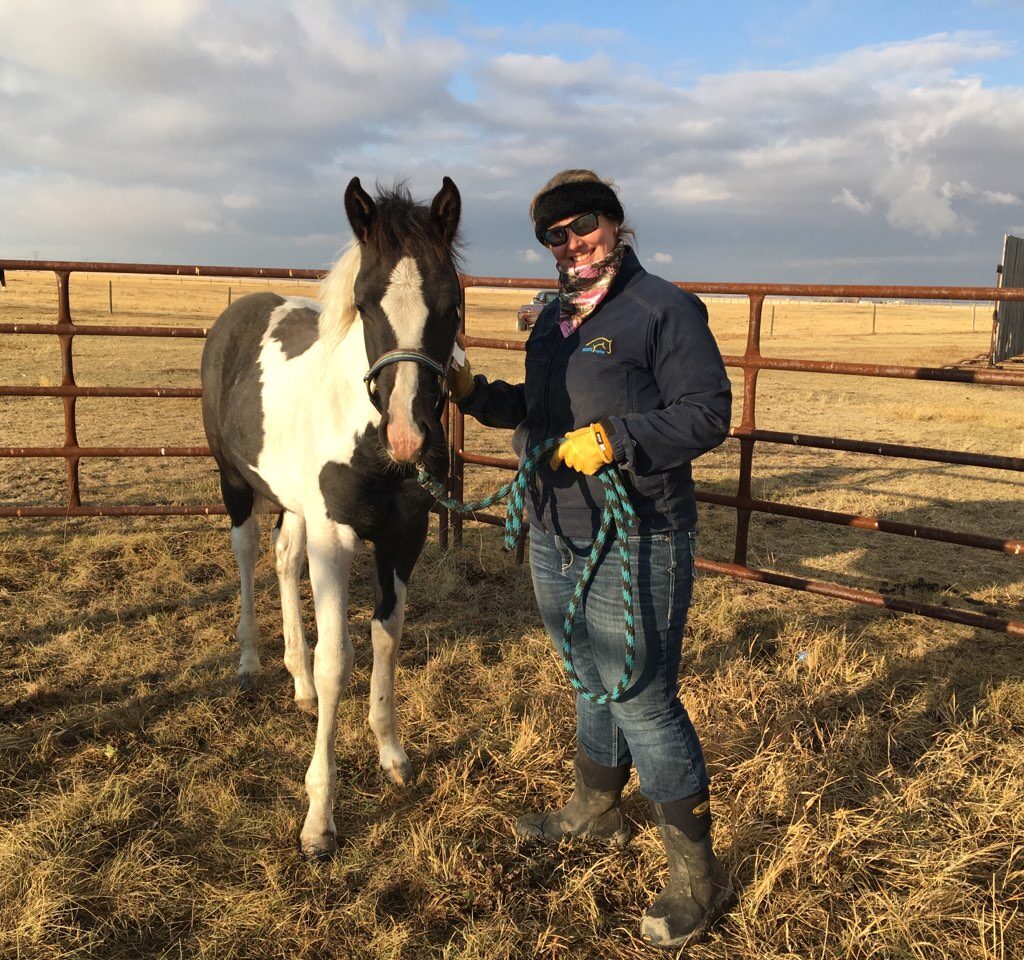From veterinary technician to certified Equine Internal Medicine specialist
“I’ve always been a horse-crazy girl and wanted to be involved in everything to do with them,” says Registered Veterinary Technician (RVT) Amanda Albrecht. In 2021, Amanda met all the requirements to achieve a Veterinary Technical Specialty in Equine Internal Medicine, becoming the first in her profession to do so worldwide. Here’s her story—and a glimpse at how advanced training has spurred her career forward.

From farm to faraway lands… and back home
Raised as an only child on a small farm west of Beiseker, Alberta, Amanda’s childhood companions were often covered in fur or feathers. “I tried to save every injured cat or bird I could find, even the odd gopher,” she recalls. Making her way through high school, she realized becoming a veterinarian was out of her reach—but she was thrilled to discover the profession of veterinary technician.
After graduating from Olds College, Amanda was offered various opportunities. She started her technical career with small animals, then mixed animals, some wildlife work in Australia, and even worked as a sales representative for a pharmaceutical company. “The nice thing about this industry is that it lets you experience multiple fields over a long career,” she says.
She found her calling in Equine Internal Medicine and joined Moore Equine Veterinary Services in Calgary in 2016 as an internal medicine technologist. “The team is amazing, and within a month, I knew this is where I wanted to stay,” adds Amanda. Her journey has come full circle: the clinic where she works is just a half hour away from her childhood home.
From farm to faraway lands… and back home
Raised as an only child on a small farm west of Beiseker, Alberta, Amanda’s childhood companions were often covered in fur or feathers. “I tried to save every injured cat or bird I could find, even the odd gopher,” she recalls. Making her way through high school, she realized becoming a veterinarian was out of her reach—but she was thrilled to discover the profession of veterinary technician.
After graduating from Olds College, Amanda was offered various opportunities. She started her technical career with small animals, then mixed animals, some wildlife work in Australia, and even worked as a sales representative for a pharmaceutical company. “The nice thing about this industry is that it lets you experience multiple fields over a long career,” she says.
She found her calling in Equine Internal Medicine and joined Moore Equine Veterinary Services in Calgary in 2016 as an internal medicine technologist. “The team is amazing, and within a month, I knew this is where I wanted to stay,” adds Amanda. Her journey has come full circle: the clinic where she works is just a half hour away from her childhood home.
How to earn a Veterinary Technician Specialty (VTS) certification
The VTS program, managed by the National Association of Veterinary Technicians in America and delivered through affiliated academies, recognizes veterinary technicians’ advanced knowledge and skills across various disciplines, including dental health, diagnostic imaging, and internal medicine.
Although requirements vary by academy, the rigorous screening process generally includes three to five years of full-time experience in the chosen field, letters of recommendation, 40 hours of continuing education, a comprehensive set of short case logs, detailed case reports, and demonstrated mastery of advanced technical skills. Candidates who successfully meet all these criteria are invited to sit for an exam the following year, which, if passed, results in admission to the academy.
